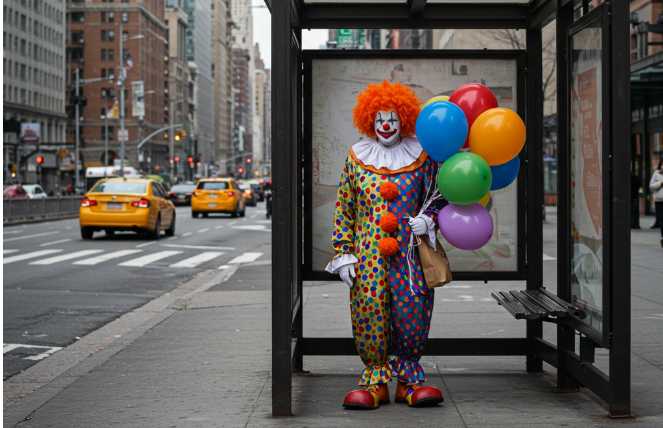Every now and then, a marketing stunt comes along that feels like pure genius. It’s not flashy in the traditional sense. It doesn’t rely on a multi-million dollar budget or a famous celebrity endorsement. Instead, it captures people’s attention by doing something simple, strange, and unexpected.
That’s exactly what happened when a small, relatively unknown New York-based production company decided to think outside the box—or in this case, outside the circus tent.
The Curious Case of the Random Clown
As part of their guerrilla marketing campaign for an upcoming movie short, the studio hired an actor dressed as a clown. The catch? The clown didn’t perform. He didn’t speak. He didn’t hand out flyers or hold signs. He just… showed up. Randomly. Around New York City. One day, he’d be seen standing silently at a bus stop in Queens. The next, someone would snap a photo of him in Central Park. No logos. No hashtags. No explanation.
People were intrigued.
And when people get intrigued, they talk. Photos of the clown started popping up on social media. Reddit threads lit up with theories. Was it art? Was it a protest? Was it a warning? Theories ran wild, and the mystery grew legs of its own.
Soon, the obscure production company behind the stunt was making international headlines. What started as a small local effort exploded into a viral phenomenon. When the campaign was finally revealed to be a clever publicity stunt, the film got more buzz than its creators could’ve dreamed of—and the production company, once obscure, was suddenly on everyone’s radar.
Why It Worked
This stunt worked for a few reasons:
- It tapped into curiosity. Humans are wired to solve puzzles. When something doesn’t quite add up, we have to know why.
- It felt organic. It wasn’t overly branded or obviously promotional. People discovered it on their own, and that made it feel authentic.
- It was repeatable. The clown kept showing up, which created a breadcrumb trail of mystery that kept people engaged.
These principles are powerful tools for any business—not just film studios.
What You Can Learn for Your Business
You don’t need to dress up like a clown (unless that’s on-brand for you), but you can learn from this viral success. The key is to create a “talk trigger.” That could be:
- A surprising giveaway or challenge
- A mysterious teaser campaign
- An unusual public art installation
- A quirky mascot with a story
Need some inspiration? Check out how Dollar Shave Club launched with a hilarious, low-budget video that racked up millions of views—or how IHOP became IHOb for a brief (and brilliant) PR stunt.
The point is: viral doesn’t mean expensive. It means interesting. It means different. And above all, it means engaging.
So ask yourself—what story can you tell that’s just mysterious or intriguing enough to get people talking?












